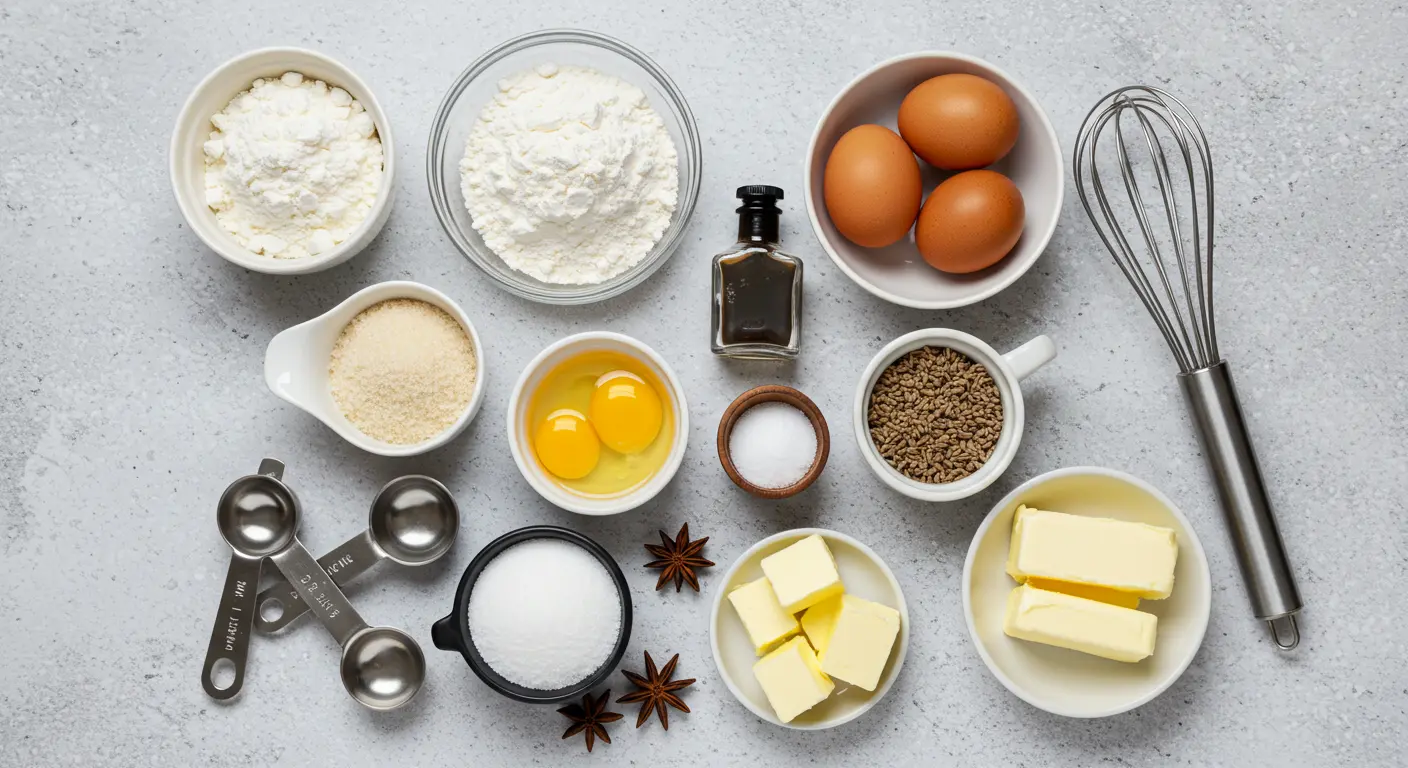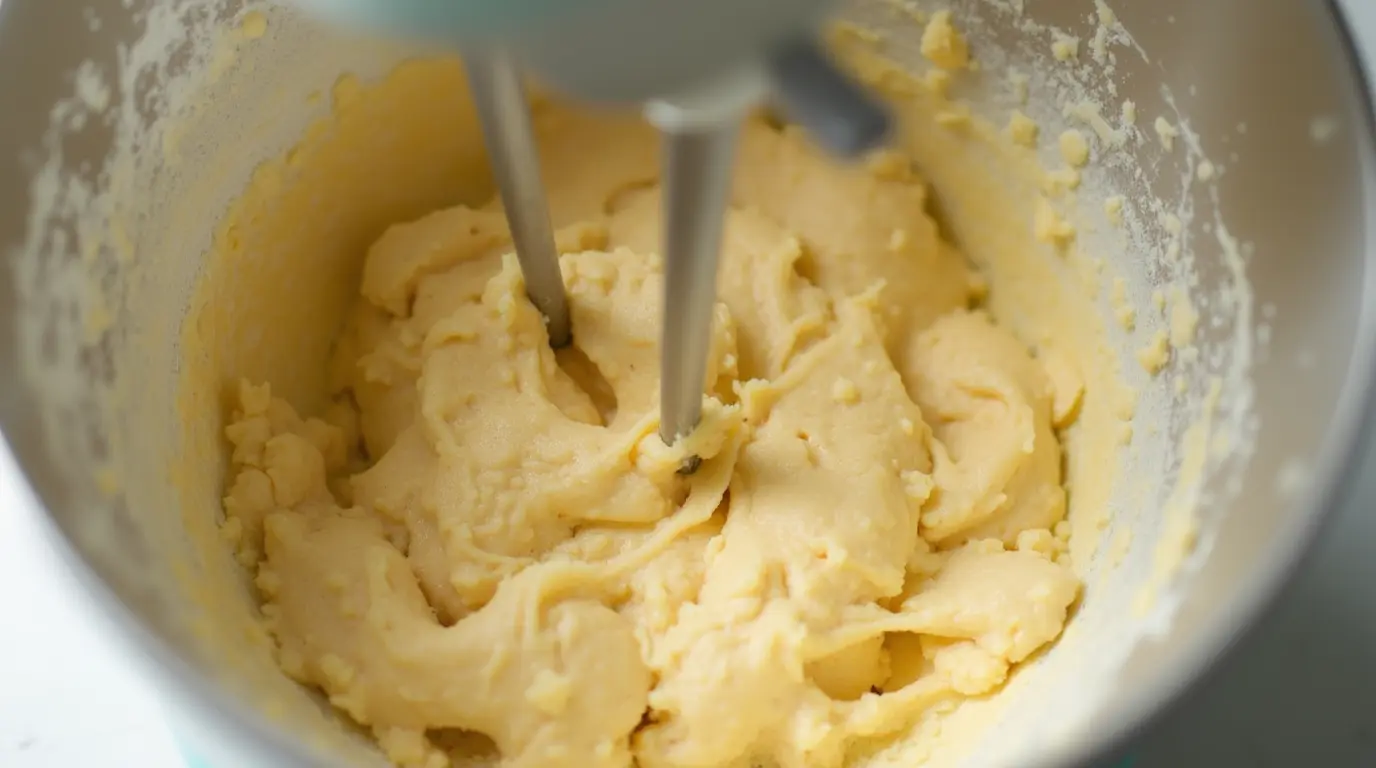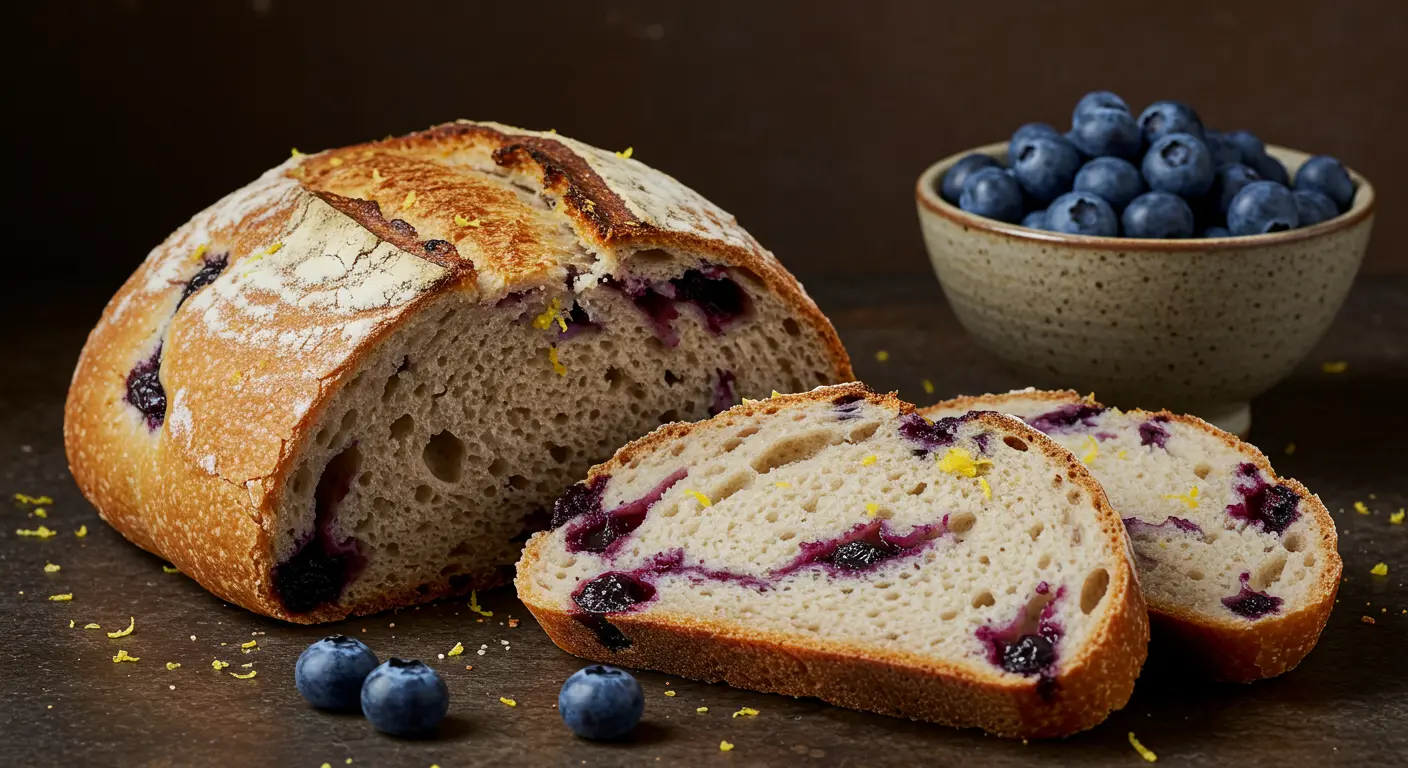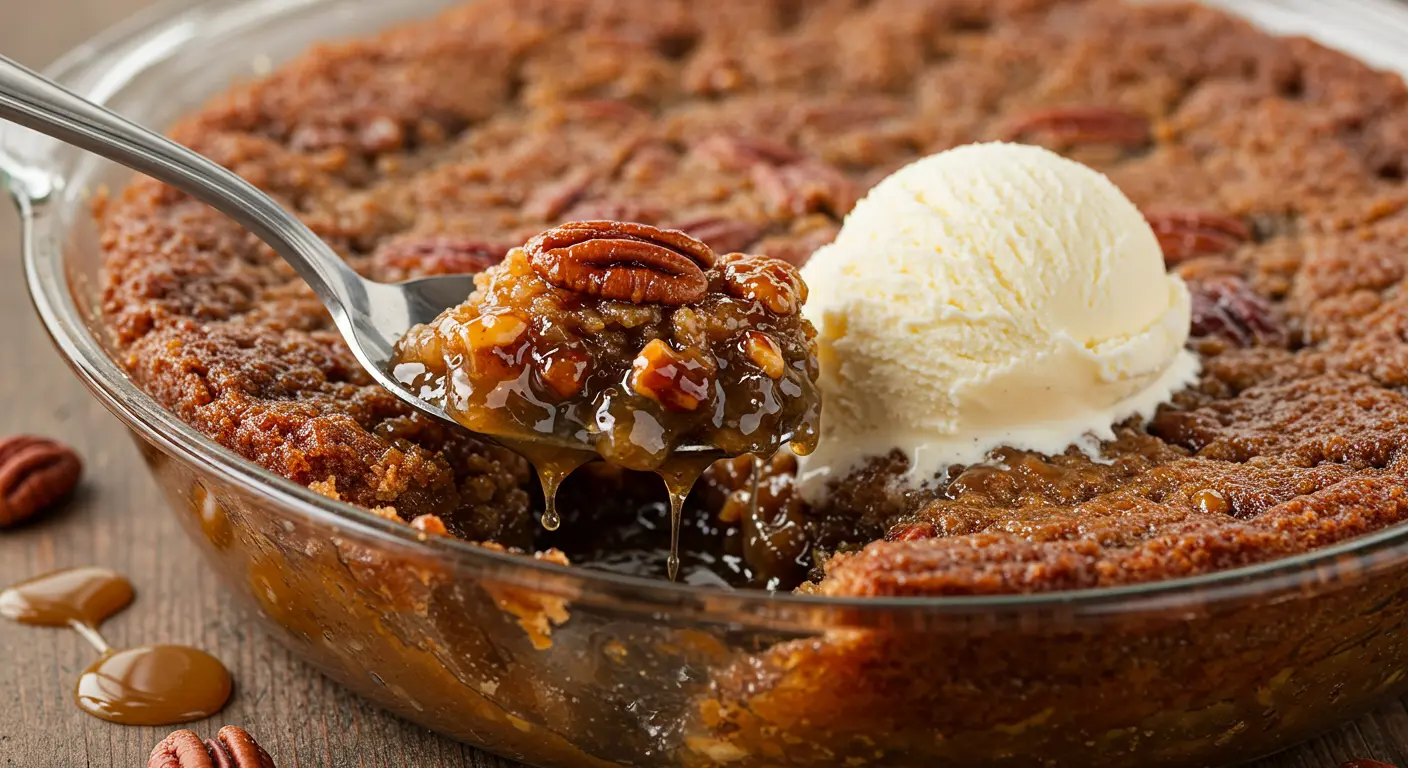Imagine the aroma of freshly baked cookies wafting through your kitchen, filling the air with the warm, sweet scent of anise. This anise cookie recipe is not just a treat for the taste buds but a celebration of tradition, flavor, and simplicity. Known for their delicate sweetness and unique licorice-like flavor, these cookies bring the charm of Italian cookies with anise straight to your home.
Growing up, anisette cookies were a staple in family gatherings, especially during the holidays. The combination of their tender texture, light sweetness, and that unmistakable anise frosting made them a standout dessert on every table. With roots tracing back to Italian and Mediterranean baking traditions, these cookies are cherished for their versatility and timeless appeal.
What sets this recipe apart is its simplicity and foolproof method. Whether you’re an experienced baker or trying your hand at making iced Italian cookies for the first time, this recipe ensures perfect results every time. Plus, the inclusion of a luscious anise frosting elevates these cookies into something truly special.
In just six simple steps, you’ll learn how to make the best anise cookie recipe, with tips and tricks to avoid common pitfalls. This guide also offers insights into substitutions, variations, and presentation ideas to make these cookies truly your own. Let’s dive into a recipe that promises to be a hit at every gathering, bringing joy and delicious memories with every bite.
Quick Recipe Card
Prep Time: 20 minutes
Cook Time: 15 minutes
Total Time: 35 minutes
Difficulty: Easy
Servings: 24 cookies
Nutritional Information (Per Serving):
- Calories: 120
- Fat: 4g
- Carbohydrates: 18g
- Protein: 2g
Equipment Needed:
- Mixing bowls
- Hand or stand mixer
- Baking sheets
- Parchment paper
- Cooling rack
Ingredients:
- For the Cookies:
- 2 ½ cups (310g) all-purpose flour
- 1 tsp baking powder
- ½ tsp salt
- 1 cup (200g) granulated sugar
- ½ cup (120g) unsalted butter, softened
- 3 large eggs
- 1 tsp pure vanilla extract
- 2 tsp anise extract
- For the Anise Frosting:
- 1 ½ cups (180g) powdered sugar
- 2 tbsp milk (adjust for consistency)
- ½ tsp anise extract
- Food coloring (optional)
Instructions:
- Preheat your oven to 350°F (175°C) and line baking sheets with parchment paper.
- In a medium bowl, whisk together the flour, baking powder, and salt.
- In a larger bowl, cream the sugar and butter until light and fluffy. Beat in the eggs, vanilla extract, and anise extract.
- Gradually mix in the dry ingredients until combined.
- Roll tablespoon-sized dough balls and place them onto the prepared baking sheets, spacing them 2 inches apart.
- Bake for 12-15 minutes until the edges are lightly golden. Let cool completely.
- Prepare the anise frosting by mixing powdered sugar, milk, and anise extract. Drizzle or spread over cooled cookies.
These anisette cookies are a delightful blend of sweetness and flavor, with their signature anise frosting providing the perfect finishing touch. Whether you’re a fan of iced Italian cookies or looking to master a classic anise cookie recipe, this guide will help you achieve bakery-quality results at home.
Ingredient Deep Dive

When it comes to baking an irresistible anise cookie recipe, the quality of your ingredients makes all the difference. Let’s break down the key components that ensure your cookies turn out perfectly every time.
Flour
All-purpose flour is the foundation of any cookie recipe, including this anise cookie recipe. It provides structure and texture, ensuring your cookies have the right balance of tenderness and chew. If you’re aiming for a gluten-free version, you can substitute it with a 1:1 gluten-free all-purpose flour blend, which will give you similar results without compromising the texture.
Sugar
Granulated sugar is essential in this recipe for sweetness and for helping to achieve a soft, chewy texture. You can substitute part of it with brown sugar for a deeper, more caramel-like flavor. For a healthier alternative, consider using coconut sugar or a sugar substitute that measures cup-for-cup.
Butter
Butter provides richness and flavor to your anise cookie recipe. You can substitute unsalted butter with margarine or a plant-based butter for a dairy-free option. Be sure to use softened butter for easy mixing, as this ensures the dough comes together smoothly.
Anise Extract
The star ingredient in this recipe is the anise extract, which gives the cookies their signature licorice-like flavor. Anise extract can be hard to find in some areas, but if you can’t locate it, fennel extract or even a dash of anise oil can serve as a substitute. However, the flavor will not be quite the same. If you prefer a less intense flavor, adjust the quantity to your liking.
Anise Frosting
Anise frosting adds an extra layer of flavor to your anisette cookies. Powdered sugar, milk, and a bit more anise extract come together to create a smooth, glossy icing that complements the cookies perfectly. You can experiment by adding a few drops of food coloring to the frosting for a festive touch, making these iced Italian cookies stand out at any gathering.
Eggs
Eggs help bind the ingredients together, providing moisture and structure to the dough. If you’re making a vegan version, substitute each egg with a flax egg (1 tbsp ground flaxseed mixed with 2.5 tbsp water). This will work well in the dough but may alter the texture slightly.
Baking Powder
Baking powder ensures that your cookies rise and spread just right. For a more natural alternative, you can use a combination of baking soda and cream of tartar. However, make sure to adjust the quantities to maintain the proper balance of leavening.
Storage Tips
Once your anise cookies have cooled, store them in an airtight container at room temperature for up to a week. To keep the cookies fresh longer, consider refrigerating them. You can also freeze the dough before baking, storing it in a tightly wrapped log in the freezer for up to three months. Just slice and bake straight from the freezer for a fresh batch of cookies when you need them.
For the best results, ensure your anise cookie recipe is baked in the right temperature range—350°F (175°C)—to ensure even baking and prevent over-browning. A quick check of the cookies during baking can help you adjust the timing to your liking, especially when making iced Italian cookies.
Equipment Needed
To make the best anise cookie recipe, having the right tools can make the process easier and more enjoyable. Let’s look at the essential equipment you’ll need to create perfect cookies every time.
- Mixing Bowls
A set of mixing bowls is essential for combining your ingredients. Opt for stainless steel or glass bowls, as they are easy to clean and won’t retain odors. A medium-sized bowl is perfect for mixing the dry ingredients, while a larger bowl is ideal for the wet ingredients and creaming the butter and sugar.
- Hand or Stand Mixer
A hand mixer or stand mixer will make the mixing process quick and easy. The stand mixer is particularly helpful for incorporating butter and sugar into a light, fluffy texture. If you don’t have a stand mixer, a hand mixer works just fine and is a more budget-friendly option. Both will help you achieve the smooth dough needed for this anise cookie recipe.
- Baking Sheets
Choose heavy-duty baking sheets to ensure even heat distribution while baking your cookies. For best results, line them with parchment paper to prevent sticking and ensure easy cleanup. If you’re using a non-stick baking sheet, no parchment paper is necessary, but it’s still a good option for effortless removal.
- Cooling Rack
After baking, allow your anisette cookies to cool completely on a cooling rack. This helps the cookies firm up and prevents them from becoming soggy. If you don’t have a cooling rack, you can use a clean countertop, but a dedicated rack ensures proper airflow around the cookies.
- Spatula and Cookie Scoop
A sturdy spatula is essential for transferring the cookies onto the cooling rack or plate. If you want perfectly uniform cookies, a cookie scoop will help you measure out consistent portions of dough. This is especially useful for making iced Italian cookies, where presentation matters.
- Measuring Cups and Spoons
Accurate measurements are key to a successful anise cookie recipe. Invest in a good set of measuring cups and spoons, preferably stainless steel or glass, for long-lasting durability. These tools ensure that you’re using the right amounts of ingredients for the perfect dough consistency and flavor balance.
- Piping Bags (Optional)
If you’re planning to decorate your iced Italian cookies with intricate designs or add a layer of anise frosting, piping bags with various tips can elevate the presentation. While not necessary, they can be a fun tool for those who want to make their cookies look bakery-quality.
Budget vs. Premium Options:
For budget-conscious bakers, most of these tools are available in affordable versions, such as basic hand mixers or non-stick baking sheets. If you prefer premium tools, consider investing in a high-quality stand mixer or heavy-duty baking sheets, which will last for years and deliver consistent results.
In terms of maintenance, be sure to clean your mixing tools and bakeware promptly after use to ensure they stay in top shape. Hand wash your spatulas and cookie scoops to avoid wear and tear, and remember to store your baking sheets in a dry place to prevent rust.
Step-by-Step Instructions

Baking the perfect anise cookie recipe is easy when you follow these six simple steps. Each step is crucial for creating the best flavor, texture, and appearance for your cookies. Let’s dive in!
Preheat the Oven and Prepare Your Baking Sheets
Start by preheating your oven to 350°F (175°C). This is the perfect temperature for baking your anise cookies, ensuring they cook evenly and maintain their tender texture. While the oven heats up, line your baking sheets with parchment paper. This prevents the cookies from sticking and ensures easy cleanup after baking.
Tip: Make sure your oven is fully preheated before placing the cookies inside. An oven that’s not hot enough can cause uneven baking.
Mix Dry Ingredients
In a medium-sized mixing bowl, whisk together 2 ½ cups of all-purpose flour, 1 tsp of baking powder, and ½ tsp of salt. These dry ingredients form the foundation of your anise cookie dough and help the cookies rise evenly.
Visual Cue: The mixture should look light and airy, with no lumps or clumps of flour.
Cream Butter and Sugar
In a separate, larger mixing bowl, use a hand mixer or stand mixer to cream together 1 cup of granulated sugar and ½ cup of softened unsalted butter. Beat the mixture on medium speed until it becomes light and fluffy. This process incorporates air into the dough, ensuring your cookies have the perfect texture.
Tip: Don’t overmix—once the mixture is light and fluffy, it’s ready for the next step.
Add Wet Ingredients
To the butter and sugar mixture, add 3 large eggs, 1 tsp of vanilla extract, and 2 tsp of anise extract. Mix until fully combined. The anise extract is key to infusing your cookies with that signature licorice-like flavor that makes this anise cookie recipe so special.
Visual Cue: The mixture should be smooth and creamy, with no visible streaks of egg or butter.
Combine Wet and Dry Ingredients
Gradually add the dry ingredients to the wet mixture, stirring until fully incorporated. You’ll have a thick dough that is slightly sticky but easy to work with. If you find the dough too soft to handle, chill it in the fridge for about 15 minutes before rolling.
Pitfall to Avoid: Be sure not to overmix the dough at this stage, as this can result in tough cookies.
Shape and Bake
Using a tablespoon or cookie scoop, form dough balls and place them 2 inches apart on the prepared baking sheets. Flatten each dough ball slightly with your fingers or the back of a spoon to help them spread evenly. Bake the cookies for 12–15 minutes, or until the edges are lightly golden.
Visual Cue: The cookies should be golden around the edges but still soft in the center when you remove them from the oven.
Tip: Check the cookies after 10 minutes to prevent overbaking. The longer they bake, the firmer they will become.
Cool and Frost
Allow the cookies to cool on the baking sheets for a few minutes before transferring them to a cooling rack. This step is important because it helps the cookies firm up and makes them easier to handle.
Once the cookies have cooled completely, drizzle them with the anise frosting for an extra layer of sweetness. You can use a piping bag for a more decorative finish or simply spread the frosting with a spatula.
Pitfall to Avoid: Ensure the cookies are completely cooled before applying the frosting. If they’re still warm, the frosting may melt and slide off.
Expert Tips and Tricks

When it comes to perfecting your anise cookie recipe, a few expert tips can make all the difference. Whether you’re a seasoned baker or just getting started, these insights will help ensure your cookies turn out just right every time.
- Use High-Quality Anise Extract
The flavor of anise is what sets these cookies apart, so don’t skimp on the quality of the anise extract. Opt for a pure extract rather than imitation, as it provides a richer, more authentic flavor. If you want to intensify the flavor, consider adding a bit more extract, but be cautious not to overpower the cookies.
- Don’t Overwork the Dough
When making this anise cookie recipe, it’s important not to overwork the dough. Overmixing can lead to dense, tough cookies. Once the wet and dry ingredients are combined, mix just until everything is incorporated. If you find the dough too sticky to handle, chill it in the refrigerator for about 15 minutes to firm it up.
- Perfect Your Cookie Shape
For uniform-sized cookies, use a cookie scoop or tablespoon to measure out your dough. This ensures each cookie bakes evenly, and they’ll all look perfectly round when they come out of the oven. Flatten each dough ball slightly with your fingers or a spoon to ensure they bake evenly and don’t puff up too much.
- Check for Doneness Early
The key to perfect anisette cookies is timing. Check the cookies after 10 minutes of baking. They should be golden around the edges but still soft in the center. If you prefer a crispier texture, leave them in for an additional 1–2 minutes, but be careful not to overbake them.
- Make Ahead and Store
The great thing about this anise cookie recipe is that you can make the dough ahead of time. If you want to bake the cookies later, simply wrap the dough tightly in plastic wrap and refrigerate it for up to 3 days. For longer storage, freeze the dough for up to 3 months. When you’re ready to bake, let the dough thaw at room temperature for 15 minutes before shaping it.
For the best results, store the cookies in an airtight container at room temperature for up to a week. If you want to keep them fresh longer, freeze the cookies after they’ve been frosted. Just wrap them individually in plastic wrap before placing them in a freezer-safe bag or container.
- Troubleshooting Common Issues
- Cookies Spreading Too Much: If your cookies spread too much during baking, it’s likely the dough was too warm when placed on the baking sheet. Chill the dough before baking, and ensure your baking sheets are cool when placing the dough on them.
- Cookies Are Too Hard: Overbaking can cause your cookies to turn out hard. Keep a close eye on them during baking, and take them out of the oven as soon as the edges turn golden.
- Frosting Too Runny: If your anise frosting is too thin, simply add more powdered sugar until it reaches the desired consistency. If it’s too thick, add a drop of milk at a time until it becomes spreadable.
Variations and Customizations
One of the best things about anise cookies is their versatility. While this anise cookie recipe is already delicious on its own, there are plenty of ways to customize it to suit your preferences or celebrate different seasons. Here are some ideas for variations, dietary modifications, and creative ways to make these cookies your own.
Seasonal Adaptations
Anise cookies are perfect for any time of year, but you can tailor them for specific seasons with a few simple tweaks:
- Winter & Holidays: Add festive decorations to your iced Italian cookies by using red and green food coloring in the frosting or sprinkling them with colored sugar. You can also add a touch of cinnamon or nutmeg to the dough for a warm, spiced flavor that’s perfect for the holiday season.
- Spring & Easter: Shape the cookies into fun designs, like flowers or Easter eggs, and decorate them with pastel-colored frosting or sprinkles. A dash of lemon zest in the dough can also add a refreshing springtime flavor.
- Fall: Incorporate a hint of pumpkin spice or cardamom in the dough for a cozy, autumn-inspired variation. The anise flavor pairs beautifully with these spices, creating a warm and comforting cookie.
Dietary Modifications
If you have dietary restrictions, you can easily modify this anise cookie recipe to fit your needs without sacrificing flavor:
- Gluten-Free: Substitute the all-purpose flour with a gluten-free 1:1 flour blend. Make sure to use a high-quality blend that includes xanthan gum to help bind the dough.
- Vegan: Swap out the butter for a plant-based butter or margarine and replace the eggs with flax eggs (1 tbsp ground flaxseed + 2.5 tbsp water per egg). Ensure your anise extract is alcohol-free, as some commercial extracts contain alcohol.
- Dairy-Free: Use dairy-free margarine or plant-based butter and a dairy-free milk for the frosting (coconut or almond milk works well).
Flavor Variations
While the classic anise flavor is beloved in this recipe, you can play around with different flavors to create your own twist on the traditional cookie:
- Anise and Almond: Add ½ tsp of almond extract to the dough to create a delightful anise-almond combination. This pairs wonderfully with the sweet anise frosting.
- Lemon or Orange Zest: Add citrus zest (about 1 tsp) to the dough for a bright, refreshing burst of flavor that complements the anise perfectly.
- Chocolate-Dipped: For a decadent touch, dip half of each cookie in melted dark or milk chocolate. Allow the chocolate to set before serving. This adds richness and makes the cookies even more indulgent.
- Cinnamon: If you enjoy a more spiced flavor, try adding ½ tsp of ground cinnamon to the dough. It pairs beautifully with the anise flavor, giving the cookies an extra layer of warmth and depth.
Decoration Ideas
Anise cookies, especially when iced, are perfect for creative decoration:
- Sprinkles: After frosting, sprinkle colored sugar, edible glitter, or sprinkles over the cookies to make them look festive and fun.
- Royal Icing Designs: Use a piping bag to create intricate designs with royal icing, such as flowers, hearts, or geometric patterns. This adds a professional touch to your iced Italian cookies.
- Nuts and Candies: For an added crunch and flavor, top the cookies with chopped nuts (such as pistachios or almonds) or candy pieces. You can also press candied fruit pieces into the top of the cookies before baking for a colorful look.
Serving and Presentation

After all the hard work of making your anise cookie recipe, it’s time to present your delicious creations! Whether you’re serving them at a casual gathering or for a special occasion, here are some tips to make your cookies look as impressive as they taste.
Plating Suggestions
For a simple yet elegant presentation, arrange your iced Italian cookies on a beautiful serving plate or tray. Opt for a clean white plate to let the colors of the frosting pop, or choose a rustic wooden platter for a more cozy, homemade vibe. If you’ve decorated your cookies with intricate piping, consider stacking them in layers for a more dramatic look.
Tip: Use parchment paper or a decorative napkin underneath the cookies for a touch of refinement. This will also protect the surface from any frosting drips.
Accompaniment Recommendations
Pair your anise cookies with a hot beverage to complement their flavor:
- Coffee or Espresso: The slightly bitter flavor of coffee pairs beautifully with the sweet anise cookies, especially when you’ve added a touch of anise frosting.
- Tea: A light tea, such as chamomile, Earl Grey, or a citrus blend, will enhance the anise flavor without overpowering it.
- Hot Chocolate: For colder months or a decadent treat, serve your cookies with a cup of rich, hot chocolate. The chocolate’s richness balances out the lightness of the cookies.
Special Occasion Presentations
Anise cookies are perfect for celebrations. Whether it’s a birthday, holiday, or any festive gathering, you can easily elevate their presentation:
- Holiday Gifts: Package your iced Italian cookies in decorative boxes or bags tied with ribbons. This makes for a thoughtful homemade gift, especially during the holiday season.
- Party Platters: Serve the cookies on a large platter as part of a dessert spread. Mix them with other homemade treats like biscotti or shortbread to create a delightful variety for your guests.
- Wedding Favors: For a unique wedding favor, present individual cookies in small clear bags with personalized tags. These cookies, with their anise frosting and elegant design, make a charming and memorable gift.
Photography Tips for Social Sharing
If you’re sharing your cookie creations on social media, a little styling goes a long way:
- Lighting: Natural light is the best for food photography. Try taking your photos near a window during the day to get soft, flattering lighting that highlights the cookies’ texture and frosting details.
- Angles: Overhead shots work well to show off the full spread of cookies, while close-up shots are perfect for showcasing the intricate frosting or the sparkle of sugar crystals.
- Background and Props: Use simple, neutral backgrounds to keep the focus on your cookies. Adding small props like a cup of tea, some sprigs of fresh herbs, or a vintage baking tool can give your photo a cozy, inviting vibe.
Pairing Suggestions
To take your cookie experience to the next level, consider these complementary flavors:
- Cheese: Pair your anise cookies with a mild cheese like ricotta or mascarpone for a sophisticated contrast between sweet and savory.
- Fruit: Fresh berries, especially strawberries or raspberries, add a refreshing touch to balance the richness of the cookies.
- Liqueur: If you’re enjoying these cookies at an adult gathering, consider pairing them with a sweet dessert wine or a splash of anisette liqueur for a fun twist.
Conclusion
There’s something truly special about the classic anise cookie recipe. Its distinct flavor, derived from the aromatic anise extract, makes it a timeless treat that pairs perfectly with a warm cup of coffee or tea. Whether you’re preparing these cookies for a holiday, a special occasion, or simply as a delicious snack, the results are always delightful.
From the delicate process of making the dough to the final touch of anise frosting, each step of the process contributes to a perfect batch of anisette cookies that are sure to impress. The iced Italian cookies you create with this recipe can be customized to suit any season or dietary need, ensuring that every bite is just as delightful as the last.
For those who are looking to explore variations, you can add seasonal flavors, make dietary modifications like gluten-free or vegan, or get creative with different frostings and decorations. The flexibility of the anisette cookie recipe ensures that you can always make it your own, while the core flavors remain timeless.
So, whether you’re making Italian cookies with anise for the first time or perfecting your technique, this recipe is your guide to baking success. Don’t forget to share your creations with family and friends—you’ll surely find that they can’t get enough of these sweet, aromatic cookies topped with anise frosting. Ready to bake? Let the wonderful scent of fresh anise cookies fill your kitchen today!
FAQ Section
- What makes anise cookies different from other cookies?
Anise cookies stand out because of their distinct, aromatic flavor derived from anise extract. Unlike other cookies that may use vanilla or chocolate for flavor, these cookies have a sweet, slightly licorice-like taste, which is particularly noticeable in anisette cookies. The addition of anise frosting on top of the cookies adds an extra layer of sweetness that balances the bold flavor of the anise. - Can I make this anise cookie recipe gluten-free?
Yes! To make a gluten-free version of this anisette cookie recipe, simply substitute the all-purpose flour with a 1:1 gluten-free flour blend. Make sure the blend includes xanthan gum to help bind the dough. You can still enjoy delicious Italian cookies with anise that are suitable for those with gluten sensitivities. - How do I store leftover anise cookies?
Store your iced Italian cookies in an airtight container at room temperature for up to a week. If you want them to stay fresh longer, you can freeze them after frosting. Wrap each cookie individually in plastic wrap and place them in a freezer-safe bag. When you’re ready to eat them, just let them thaw at room temperature. - Can I add other flavors to my anise cookie recipe?
Absolutely! While the traditional anise cookie recipe is delicious on its own, you can experiment by adding different flavors. For example, you can incorporate lemon zest, almond extract, or even cinnamon for a spiced twist. These additions pair beautifully with the distinct flavor of anise and will give your anisette cookies a unique taste. - What is the best way to decorate anise cookies?
The best part of making iced Italian cookies is decorating them! Once your cookies are baked and cooled, you can frost them with anise frosting and decorate them with sprinkles, colored sugar, or even edible glitter for a festive touch. If you’re feeling creative, use royal icing to pipe designs like flowers or geometric patterns to make them extra special. - Can I make anisette cookies ahead of time?
Yes, you can prepare the dough for anisette cookies ahead of time. Just wrap it tightly in plastic wrap and refrigerate it for up to 3 days. Alternatively, you can freeze the dough for up to 3 months. When you’re ready to bake, let the dough thaw at room temperature for 15 minutes before shaping it into cookies. - Are anise cookies suitable for special occasions?
Yes! Anise cookies are perfect for holidays, birthdays, and other special occasions. Their unique flavor makes them stand out, and their ability to be decorated in various ways allows you to create a personalized touch. Whether you’re serving them as part of a dessert spread or gifting them to friends and family, these cookies will always be a hit.






